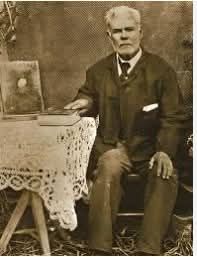Enrique Esparza’s life was forever shaped by the shadow of the Alamo. The son of Gregorio Esparza and Ana Salazar, Enrique was most likely born in September 1828, though he sometimes claimed an earlier birth year. His childhood innocence was shattered when his father died bravely defending the Alamo, leaving Enrique to carry the memory of those fateful days into adulthood—and into history.
Years later, in 1907, a journalist from the San Antonio Express named Charles Merritt Barnes sat down with Esparza, now an old man, to record his recollections. With quiet solemnity, Esparza reflected, “All the others are gone. I alone remain of those who were inside the Alamo when it fell. When I, too, am laid to rest in Campo de los Santos, there will be no one left to tell the story firsthand. You ask if I remember? How could I forget? Those moments are burned into my mind, indelible. Time hasn’t faded them; sickness hasn’t blurred them. The terror of that day is with me always.”
Esparza’s memories, preserved in interviews published by the Express in 1902 and 1904, offer a precious glimpse into the Alamo’s final hours. He spoke not just of the soldiers, but of the women, children, and families who shared the mission’s walls: people like Concepción de los Angeles Charlí (whom he knew as Concepción Losoya), her son Juan, and her daughter Juana, who was married to Eliel Melton. These personal details remind us that the Alamo’s story is as much about everyday lives interrupted as it is about legendary battles.
In the years that followed, Esparza built a life beyond the shadow of those walls. He married Gertrudes Hernández, and together they raised seven children. Their daughter, María Josefa, made her own mark on history when she became one of the first women in the region to join the Sisters of Charity of the Incarnate Word, taking the name Sister Claude in 1871.
Enrique Esparza’s life bridges the heroic and the humble, the historic and the deeply personal. His voice, tender with the weight of memory, ensures that the human heart of the Alamo endures—not as a distant legend, but as a story of real people, remembered.
